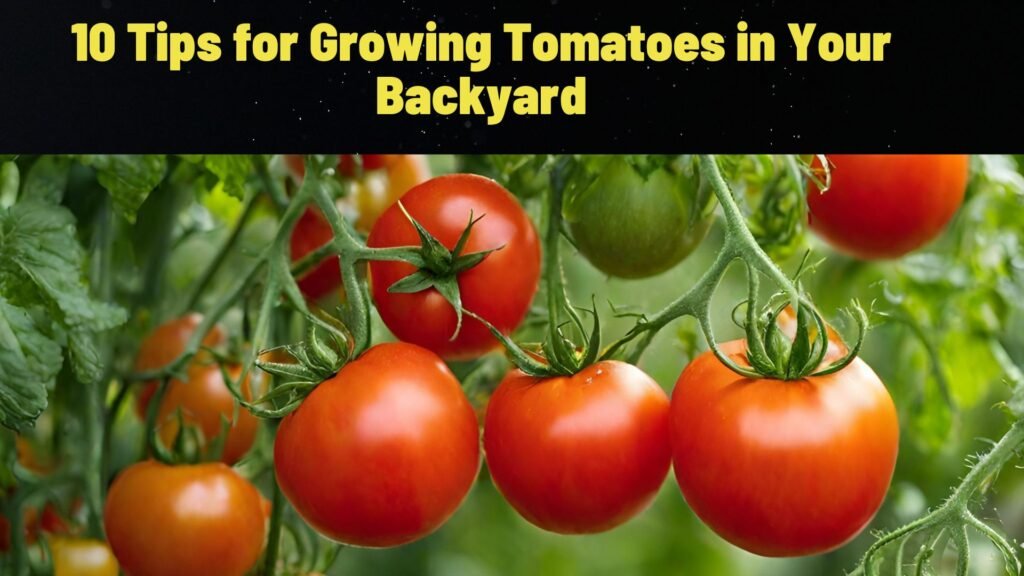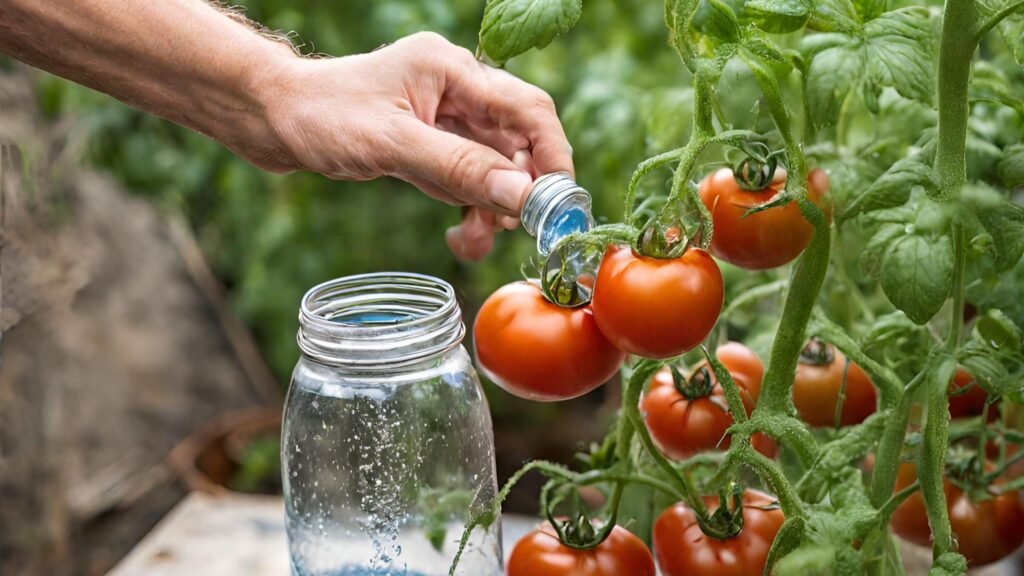Learn how to prepare soil for planting vegetables in Atlanta gardens with easy steps. Improve Atlanta’s clay soil with compost and pH for healthy vegetables.
How to Prepare Soil for Planting Vegetables in Atlanta Gardens: Top Tips
Atlanta’s gardens often start with heavy red clay soil that drains poorly. Learning how to prepare soil for planting vegetables in such conditions is key to a great harvest. By loosening the clay and mixing in compost, you’ll give tomatoes, cucumbers, and carrots a healthier place to root. Good soil prep improves drainage and nutrients, leading to stronger plants and bigger vegetables.
Georgia’s red clay soil (orange clumps in photo) is dense and low in organic matter but mixing in dark compost improves its structure. Atlanta’s climate is warm and humid, which means soil can alternate between very wet conditions in spring and very dry conditions in summer. Adding organic matter like compost helps the soil retain moisture during dry spells and drain better during heavy rains.

If your ground is extremely hard, another option is to use raised garden beds filled with a quality soil mix. Many Atlanta gardeners use raised beds to overcome clay, but even in raised beds you should mix in compost and check the soil pH.
Raised garden beds filled with rich soil are one way to overcome clay. They allow roots to grow without fighting compact ground. Even in raised beds, mixing in organic matter like compost is beneficial for vegetable growth. These raised beds in a community garden show how adding good soil can help vegetables thrive.
How to Prepare Soil for Planting Vegetables: Step-by-Step Guide
Now, we will explain step by step how you can prepare soil for planting vegetables in your home garden. Let’s explore-
Pick the Right Time and Clear the Area
Plan to prepare your garden soil a few weeks before planting (or in the fall prior). Avoid working the soil when it’s waterlogged; wait until it’s moist but not muddy. Remove any weeds, grass, or old roots so you start with a clean bed.
Loosen the Soil Deeply
Use a shovel or garden fork to dig down about 8–12 inches and turn the soil over. Break up large clods of clay as you go. In small gardens, digging by hand works well; for larger areas, you might use a tiller. The goal is to loosen the soil so plant roots can penetrate easily. For extra-deep soil improvement, some gardeners practice “double digging” – digging out the first 12 inches of soil, loosening the layer below, then refilling. This can further improve root depth, though it is labor-intensive.
Add Plenty of Organic Matter
Spread a 2–4-inch layer of compost or well-rotted manure over the loosened soil, then mix it into the top 6–8 inches. Organic matter will enrich the soil and help it drain better. Compost is especially helpful for improving clay soil structure and providing nutrients. You can also mix in bagged soil conditioner (finely ground bark) which many local gardeners use to help loosen clay.
Test the Soil and Adjust if Needed
Consider doing a soil test to check pH and nutrients (your local UGA Cooperative Extension office offers soil testing services). If the soil is too acidic (common in Georgia), mix in some garden lime to raise the pH toward about 6.0–6.5. If it’s low in nutrients, add a balanced fertilizer according to recommendations. With plenty of compost, you may not need much additional fertilizer – don’t overdo it.
Rake the Soil Smooth
Rake the amended soil to break up any remaining clumps and to level the surface. A fine, even surface is especially helpful for planting seeds – small seeds like carrots germinate best in loose, clod-free soil. Remove any rocks or debris you see. Now your garden bed is ready for planting!
How to Prepare Soil for Planting Vegetables like Tomatoes, Cucumbers, and Carrots
Different vegetables sometimes have special soil needs. Here are practical examples for preparing soil when planting tomatoes, cucumbers, and carrots in Atlanta gardens:
Tomatoes
Tomatoes – These popular plants are heavy feeders, so they love soil rich in organic matter. When preparing soil for tomatoes, mix in extra compost to ensure plenty of nutrients. Make sure the area drains well (raised beds or mounds can help if your ground soil stays soggy). Tomatoes prefer slightly acidic soil (around pH 6.5); if your soil is very acidic, a little lime can help prevent blossom-end rot (a fruit disorder). According to our 10 Tips for How to Grow Tomatoes at Home guide, starting with rich soil and keeping it evenly moist gives the best results. After planting your tomatoes, spread mulch on the soil surface to help keep that moisture in during hot Atlanta summers.
Cucumbers
Cucumbers – Cucumbers thrive in loose, fertile soil. Ensure your prepared soil is well-draining yet holds moisture – mixing in compost achieves both. Aim for a similar pH around 6 to 6.5 for cucumbers. Avoid waterlogged conditions, since cucumber roots can rot in standing water. After planting, apply mulch to keep the soil evenly moist and cool for the roots. For more growing pointers, see Cucumber Plant Growing Tips: Expert Advice on our site.
Carrots
Carrots – Carrots need extra well-prepared soil because their roots grow deep and straight. Remove all rocks and break up any hard clods in the planting area so the carrots won’t hit obstacles. You might mix a bit of sand into very clayey soil along with compost to help loosen it (or use a raised bed for carrots if your ground soil is too heavy).
The soil should be fluffy and easy to dig at least 12 inches down. With soft soil, carrots will develop long, smooth roots. Harvesting is fun for kids when the carrots slip out easily from the loose earth! If your garden soil still isn’t ideal for carrots, try planting shorter varieties (like Nantes or Danvers Half-Long) or use deep containers filled with loose soil mix as an alternative.

Gardening Attractions in the Atlanta Area
Atlanta also offers some wonderful gardening attractions where you can learn and get inspiration. Here are two popular spots for Atlanta-area garden lovers, with key information for visiting:
Atlanta Botanical Garden
Atlanta Botanical Garden – Location: Midtown Atlanta (1345 Piedmont Ave NE). Hours: Tue–Sun, 9 a.m. – 7 p.m. (closed Mon).
Highlights: A 30-acre garden featuring a famous Orchid Center, a treetop canopy walk, and a children’s garden. Visitors love its stunning plant displays and exhibits. Directions: About 2 miles north of downtown (around a 10-minute drive via Piedmont Ave). Contact: (404) 876-5859
Gibbs Gardens
Gibbs Gardens – Location: 1987 Gibbs Dr., Ball Ground, GA (roughly 50 miles north of Atlanta). Hours: Tue–Sun, 9 a.m. – 4 p.m. (closed Mon, seasonal winter closures). Highlights: 300 acres of spectacular gardens, famous for millions of spring daffodils and serene Japanese gardens. Many visitors call it a “treat for the senses” due to its beauty.
Directions: About a 1-hour drive north of downtown Atlanta (via I-575). Contact: (770) 893-1880
FAQ: Soil Preparation in Atlanta
Even after following the guide above, you might still have questions about how to prepare soil for planting vegetables. Here are answers to a few common questions Atlanta gardeners often ask:
Q: Should I add sand to improve clay soil?
A: Generally, no. Adding sand alone to clay can make the soil hard, like concrete. Instead, focus on mixing in organic matter. (If you do add sand, always add plenty of compost along with it.)
What about gypsum? Gypsum (calcium sulfate) can help loosen clay in some cases, but it mainly benefits clay soils with high sodium (salt) content, which is uncommon in Atlanta. It won’t harm your soil, but adding compost gives more noticeable results.
Q: Do I need to till the soil every year?
A: Not necessarily. Once your soil is in good shape, you can often just spread new compost on top each year and lightly mix it in. Over-tilling can harm soil structure by disturbing beneficial organisms and breaking down the soil’s natural texture.
Q: Can I reuse the same garden soil next year?
A: Yes! In fact, garden soil tends to improve over time if you keep adding organic matter. There’s no need to replace soil each year – just remove any old crop debris and mix in fresh compost at the start of the next planting season.
Conclusion
Preparing your garden soil well is the secret to a thriving vegetable patch in Atlanta’s challenging clay. Now that you know how to prepare soil for planting vegetables here, you can look forward to healthier plants and a more abundant harvest. Keep in mind, building great soil is an ongoing process – add compost or other organic matter each year to maintain soil health and productivity. With a bit of effort upfront, your tomatoes, cucumbers, carrots and other crops will reward you with a season of fresh, homegrown produce. Happy gardening!



